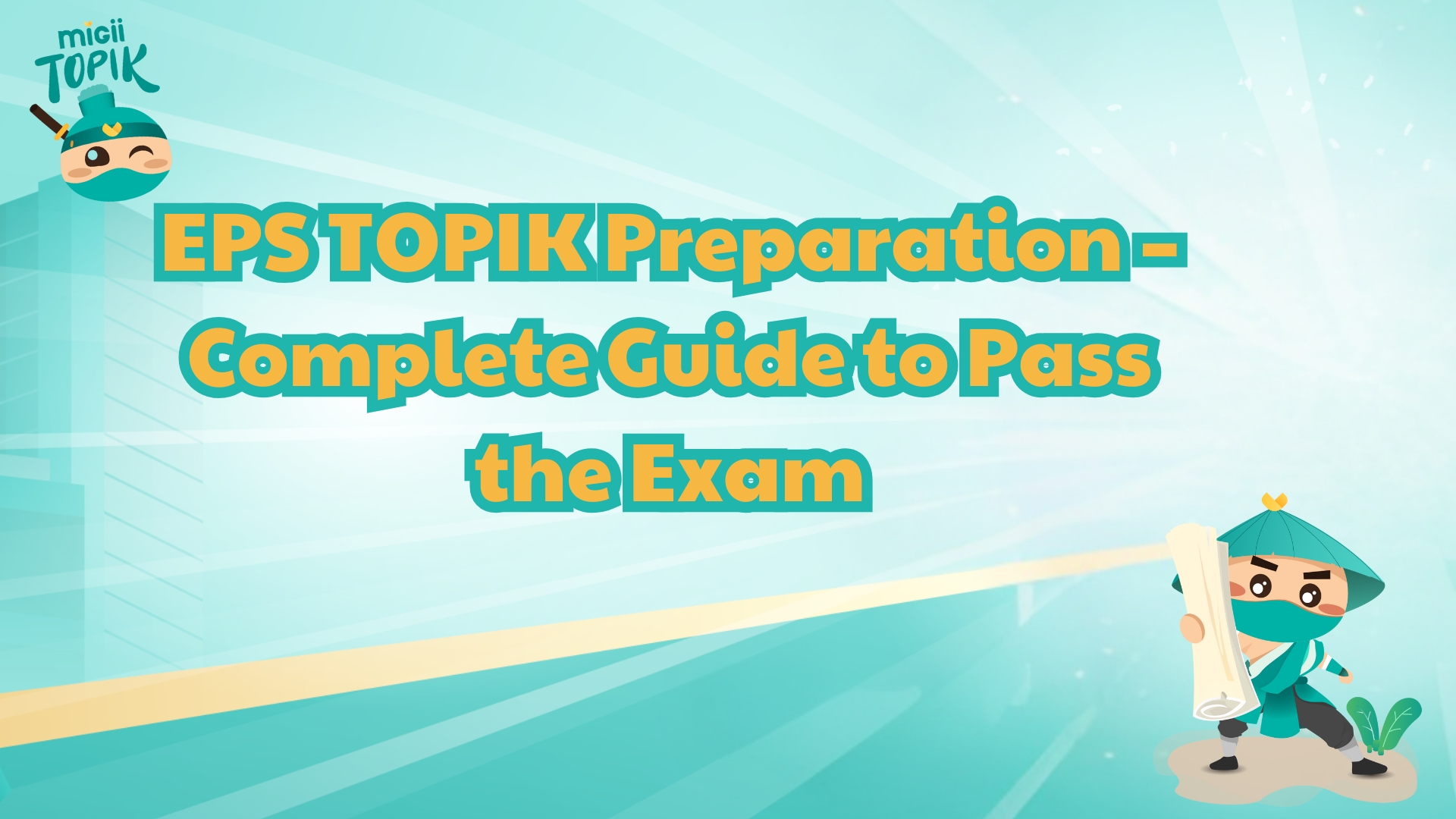JLPT passing score determines whether you pass or fail the Japanese Language Proficiency Test. Understanding the required scores for each level (N1-N5) is crucial for effective preparation. Read this full guide to know exactly how many points you need to pass.
Know more about Exam tips here!
What Is JLPT?
The Japanese Language Proficiency Test (JLPT) is a standardized exam that measures non-native speakers' ability to use Japanese in real-life situations. It is divided into five levels, from N5 (beginner) to N1 (advanced). Each level tests your skills in vocabulary, grammar, reading, and listening comprehension. The JLPT is widely recognized by universities, employers, and immigration authorities in Japan as proof of Japanese language ability.
What Is a Passing Score on JLPT?
The JLPT passing score refers to the minimum number of points you need to achieve in order to officially pass the Japanese Language Proficiency Test (JLPT). Passing the JLPT is not based solely on your total score; you must meet two critical requirements:
Total Passing Score (Overall Score)
Each level of the JLPT (N1 to N5) has a specific total score you must reach out of 180 points.
|
JLPT Level |
Total Passing Score |
|
N1 |
100 points |
|
N2 |
90 points |
|
N3 |
95 points |
|
N4 |
90 points |
|
N5 |
80 points |
Sectional Passing Score (Per Section)
You must also achieve a minimum score in each section of the exam. Failing any single section, even with a high total score, will result in failing the entire test.
In short
- You need to pass both the total score and each section individually.
- Scoring below the sectional pass mark in any part will result in failing, even if your total score is high.
How Many Questions in JLPT (per level)
While the JLPT total score is always 180 points across all levels, the number of questions varies depending on the level you take. Understanding how many questions appear on each test can help you better manage your time during the exam and plan your study schedule more effectively.
Estimated Number of Questions by JLPT Level
|
JLPT Level |
Estimated Total Number of Questions |
|
N1 |
~110–120 questions |
|
N2 |
~105–115 questions |
|
N3 |
~100–110 questions |
|
N4 |
~90–100 questions |
|
N5 |
~80–90 questions |
Please note: The exact number of questions may vary slightly each year.
JLPT Scoring Sections and Score Distribution
Each JLPT level divides the test into sections, with each section contributing to the total score out of 180 points. However, the structure varies slightly depending on the level.
|
Level |
Scoring sections |
Range of scores |
|
N1 |
Language Knowledge (Vocabulary & Grammar) |
0–60 |
|
Reading |
0–60 |
|
|
Listening |
0–60 |
|
|
Total |
0–180 |
|
|
N2 |
Language Knowledge (Vocabulary & Grammar) |
0–60 |
|
Reading |
0–60 |
|
|
Listening |
0–60 |
|
|
Total |
0–180 |
|
|
N3 |
Language Knowledge (Vocabulary & Grammar) |
0–60 |
|
Reading |
0–60 |
|
|
Listening |
0–60 |
|
|
Total |
0–180 |
|
|
N4 |
Vocabulary & Grammar + Reading |
0–120 |
|
Listening |
0–60 |
|
|
Total |
0–180 |
|
|
N5 |
Vocabulary & Grammar + Reading |
0–120 |
|
Listening |
0–60 |
|
|
Total |
0–180 |
JLPT Passing Scores : How Many Points Do You Need to Pass?
To pass the JLPT, candidates must meet two key score requirements:
1. Achieve the overall passing score (total score requirement)
2. Meet the sectional passing score (minimum score for each section)
Failing to meet either requirement will automatically result in failing the entire test, regardless of how high your total score may be.
How Many Points to Pass JLPT N1?
The JLPT N1 passing score requires test-takers to meet both a total score requirement and a minimum score in each section. The full score for the N1 level is 180 points.
- Total score range: 0–180 points
- Total passing score: 100 points
This means you need at least 100 points overall to pass JLPT N1.
However, simply reaching 100 points is not enough. The JLPT scoring system also requires you to achieve a sectional passing score in each test section:
|
Section |
Score Range |
Sectional Passing Score |
|
Vocabulary & Grammar |
0–60 points |
19 points |
|
Reading |
0–60 points |
19 points |
|
Listening |
0–60 points |
19 points |
Even if your total score exceeds 100 points, failing to reach 19 points in any one section will automatically result in failing the exam.
Example
If you score 45 in Vocabulary, 36 in Reading, but only 15 in Listening, your total score is 96 — but you would fail because the Listening section score is below 19 points.
This strict scoring structure ensures that N1 candidates demonstrate balanced proficiency across all language skills — vocabulary, grammar, reading comprehension, and listening ability.
JLPT N2 Passing Score
The JLPT N2 passing score follows the same strict scoring system as N1. You must achieve both a minimum total score and meet the required score for each section. The maximum score for N2 is also 180 points.
- Total score range: 0–180 points
- Total passing score: 90 points
This means you need at least 90 points overall to pass JLPT N2.
But even if you reach 90 points or more, you still need to pass each section individually. The sectional passing score for every part of the N2 test is:
|
Section |
Score Range |
Sectional Passing Score |
|
Vocabulary & Grammar |
0–60 points |
19 points |
|
Reading |
0–60 points |
19 points |
|
Listening |
0–60 points |
19 points |
If you fail to score at least 19 points in any single section, you will automatically fail the entire exam — even if your total score is above 90.
Example
You score 40 in Vocabulary, 33 in Reading, and 17 in Listening. Your total score is 90, but because Listening is below 19, you do not pass.
This scoring system ensures that JLPT N2 candidates demonstrate balanced skills in all areas of Japanese, including vocabulary, grammar, reading comprehension, and listening.
JLPT N3 Pass Score
The JLPT N3 pass score requires candidates to meet both the overall score requirement and the sectional minimums. The total maximum score for N3 is 180 points, similar to other JLPT levels.
- Total score range: 0–180 points
- Total passing score: 95 points
To pass JLPT N3, you must score at least 95 points in total.
However, meeting the total score alone is not enough. The JLPT scoring system also demands that you reach a minimum sectional score in every part of the test:
|
Section |
Score Range |
Sectional Passing Score |
|
Vocabulary & Grammar |
0–60 points |
19 points |
|
Reading |
0–60 points |
19 points |
|
Listening |
0–60 points |
19 points |
This means that failing to reach 19 points in any one section results in failing the entire test, regardless of your total score.
Example
If you score 42 in Vocabulary, 40 in Reading, but only 13 in Listening, your total score would be 95. Despite reaching the total passing score, you would still fail because your Listening section score is below 19.
The JLPT N3 scoring system is designed to ensure that test-takers demonstrate well-rounded Japanese language abilities across vocabulary, grammar, reading comprehension, and listening.
JLPT N4 Pass Score
The JLPT N4 pass score requires candidates to meet both an overall score threshold and minimum scores for each test section. Like all JLPT levels, the full score for N4 is 180 points.
- Total score range: 0–180 points
- Total passing score: 90 points
To pass JLPT N4, you must score at least 90 points in total.
However, achieving the total score alone is not enough. You must also meet the sectional passing scores to officially pass:
|
Section |
Score Range |
Sectional Passing Score |
|
Vocabulary & Grammar + Reading (combined section) |
0–120 points |
38 points |
|
Reading |
0–60 points |
19 points |
This means that even if your total score reaches or exceeds 90, failing to score at least 38 points in the combined Vocabulary/Grammar & Reading section or 19 points in Listening will result in failing the entire test.
Example
If you score 40 in Vocabulary/Grammar + Reading and 17 in Listening, your total score is 57. Even though you passed the combined section, you failed Listening, so you do not pass overall.
The JLPT N4 scoring system ensures that learners demonstrate both reading comprehension and listening ability — essential for basic communication in Japanese.
JLPT N5 Passing Score
The JLPT N5 passing score follows the same structure as other levels but with slightly lower thresholds, reflecting the beginner level of the exam. Like all levels, the full score is 180 points.
- Total score range: 0–180 points
- Total passing score: 80 points
To successfully pass JLPT N5, you need a minimum total score of 80 points across all sections.
However, passing the total score alone is not sufficient. You must also meet the minimum sectional passing scores for each part of the test:
|
Section |
Score Range |
Sectional Passing Score |
|
Vocabulary & Grammar + Reading (combined section) |
0–120 points |
38 points |
|
Reading |
0–60 points |
19 points |
This means that even if your total score reaches or exceeds 80, failing to score at least 38 points in Vocabulary/Grammar + Reading or 19 points in Listening will result in failing the entire exam.
Example:
If you score 45 in Vocabulary/Grammar + Reading but only 16 in Listening, your total score is 61. Even though you passed the reading section, you fail the entire test because your Listening score falls below the sectional minimum.
The JLPT N5 scoring system ensures that even at the beginner level, test-takers demonstrate both basic reading comprehension and listening skills essential for foundational communication in Japanese.
JLPT Scoring System Explained (Scaled Score System)
Many test-takers assume that their JLPT score is simply the total number of correct answers. However, the JLPT scoring system uses a scaled score system, which means your final score is not a direct reflection of how many questions you answered correctly.
What Is Scaled Scoring in JLPT?
The JLPT converts your raw score (the number of correct answers) into a scaled score through a statistical process. This conversion accounts for differences in test difficulty between exam sessions and individual questions.
- The scaled score ensures fairness across multiple test dates.
- If one test version is slightly harder or easier, scaling adjusts for that.
- Two candidates with the same number of correct answers may receive different scaled scores depending on the difficulty level of the specific questions they answered.
Why Does JLPT Use Scaled Scoring?
- To maintain consistent standards from year to year.
- To ensure that scores are comparable even when test questions vary slightly in difficulty.
- To avoid unfair advantages or disadvantages due to question variations.
Key Points About JLPT Scaled Scores
- You won’t know how many raw points each question is worth.
- JLPT does not publish raw score conversion tables.
- The final score you receive (0–180) is already scaled.
- This system ensures that passing or failing is based on skill level, not on random test difficulty.
Does Scaled Scoring Affect Your Passing Score?
No. The JLPT passing score remains the same regardless of scaling.
For example, for N1 you still need 100/180 total points and 19/60 in each section. The scaled score only affects how your correct answers are converted into that 0–180 scale.
Example of Scaled Scoring in JLPT (Simplified)
|
Candidate |
Raw Correct Answers |
Scaled Score |
|
A |
50 correct answers |
100/180 |
|
B |
50 correct answers |
105/180 |
Both candidates answered the same number of questions correctly, but due to question difficulty and scaled conversion, Candidate B receives a slightly higher final score.
FAQ about JLPT passing score
Can I pass JLPT if I fail one section?
No. Even if you meet the JLPT pass score overall, you must also reach the minimum passing score for each section. For example, the JLPT N1 pass score requires at least 19 points in Vocabulary & Grammar, Reading, and Listening.
Does JLPT score expire?
No. The JLPT certificate is valid for life. There is no expiration date for your JLPT passing score.
Know more about JLPT certificate validity here!
How many questions in JLPT N1?
The N1 JLPT passing score is based on approximately 110–120 questions. The number of questions may vary slightly each year.
How many points do you need to pass JLPT?
Depending on your level (N1 to N5), you need between 80 and 100 points total, plus sectional minimums.
How long to study for JLPT N4?
Preparation time for JLPT N4 varies by learner, but most people need 6–12 months of consistent study, depending on their starting level and study method.
How to pass JLPT effectively?
To pass JLPT, balance your study across all sections: Vocabulary, Grammar, Reading, and Listening. Practice mock exams using real test formats to improve your chance of meeting both total and sectional passing scores.
How to pass JLPT?
To pass JLPT, you need to meet both the total passing score and sectional scores for your level. For example, the JLPT N1 passing score is 100 points, while the JLPT N5 passing score is 80 points. Consistent practice with mock exams, vocabulary drills, listening exercises, and grammar reviews is essential. Focus on weak areas and track your progress regularly to ensure you meet both total and sectional passing requirements.
Conclusion
Understanding the JLPT passing score is essential for anyone preparing to take the Japanese Language Proficiency Test. Each level requires you to meet both total and sectional passing scores, making balanced preparation across vocabulary, grammar, reading, and listening crucial for success.
To increase your chances of passing, consistent practice and targeted study are key. With Migii JLPT, you can access mock tests, personalized practice plans, and detailed performance tracking — all designed to help you confidently reach your target score.








